Let’s Get Wellington Moving Mass Transit: your submission guide!
It’s a crucial turning point in Wellington’s future, and you need to have a say – by 5pm Friday 10th. We’ve got you covered – with a handy submission guide for giving the city a shove in the right direction!
Only do what you need
We don’t want you to waste any time this week on things that won’t make a difference because there’s too much in the Wellington Submit-A-Rama right now, and because the LGWM deadline of 5pm Friday 10th is too close.
So, things to know:
- It’s “feedback” – not a consultation. What we say is an input to their 2022 decision-making, and in the intervening months they’ll get lots more info including from the workstreams on modelling and Travel Demand Management (TDM).
- They’ll do a mix and match of stuff that’s in the current options, plus some stuff that’s not (hello, TDM).
- So it’s useful to give them a shove in the direction of an option, and say why, but ALSO to say in the comments what you want them to know you care about, and why.
- We suggest stuff for you to do this!
- If you’re short on time, we’ve a TL;DR! Scroll to the very bottom – look for Roadrunner! Between here and there is whys and wherefores.
- Do it by 5pm 10th December – that’s Friday coming up! And please make sure you share.

What’s this guidance based on?
TW cares most about (I) liveability for the greatest number of folks, plus (II) sustainability.
So in this guidance we unpack these across the options, and give a steer on the top “What about…” questions.
I Mass transit for liveability
AKA: Enabling more people from all walks of life to live close to stuff they want to do, everyday. This is our overarching outcome at Talk Wellington because Climate, and also because People.
Why?
- Climate: we have no more time for incrementalism. Transport emissions are NZ’s low-hanging fruit for emissions reduction, and private car transport is Wellington’s lowest-hanging of our transport emissions fruit. So we’re looking for MRT stuff that frees people from having to have more car in their lives than they want. (see also: Sustainability, below).
- People: focusing on letting the greatest number of people have a really good life in Wellington. It’s obvious why this is our focus! Even if we didn’t care about the climate, we must care about people. So we’re looking for MRT stuff that will get us urban form that helps people (rather than hinders people) be healthier, more prosperous, more socially connected, happier, and have the same opportunities as others.

What should we ask when considering LGWM options on liveability?
Three big questions and four smaller Whatabouts.
1. What gives the most certainty for developers?
It’s crucial that private capital (i.e. commercial developers) are willing to take on the extremely high risk of developing, especially of developing really good (costlier-to-build) developments. Willingness needs long term certainty that for a given spot in the city, loads of people will be coming by, and loads of people will be keen to live there cos they can jump on transit really easily.
“Flexibility in the route” sounds nice but it’s a death blow for that certainty, and thereby the willingness to invest lots. This is why LGWM’s development capacity is so much lower for BRT than LRT (see the MRT presentation)
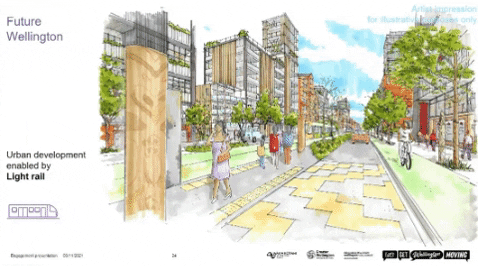
2. What has the best “no regrets” potential for the future?
If Auckland is anything to go by (and international experience worldwide): people will use a good mass transit system and you’ll kick off a positive spiral of more people able to live near it and get around on it, fuelling more good development, enabling more people to live near it. And they’ll be significantly healthier and happier as they’re able to get exercise while getting around for daily life (population-wise, far more effective than just expecting people to do sport or go to the gym).
So if you’ve chosen a system that tops out at a lower development capacity, you’ll soon need to upgrade it. But if you’ve got a bunch of narrow roads and streets (hello Wellington), you’ll have no “auxiliary route” that can carry 10,000s of people every day while you take the successful MRT offline to do all the construction works. Poor Denver learned this too late, as more and more people wanted to use their BRT (see slide 12 here) and they were faced with having to shut down the city to upgrade to a higher capacity mass transit. Don’t be like Denver.
So: to give developers the greatest certainty and thereby get the most people living close to things they like to do, and to not be caught out by our own success, light rail is the better choice through the “core” bits of the city.

(Sidebar: the spectre of COVID and lower population growth is being wafted around as an excuse to reconsider some public transport investments. As Auckland’s shown, even with a static population and lots of WFH, insufficient public transport and unsafe streets will still leave you with clogged roads from people driving themselves.And lockdowns are the right time to build, to get capacity up with less disruption ahead of recovering usage. So no, in a pandemic world a sensible city will absolutely invest in the kinds of transport that give to the city with both hands.)
3. What’s better for liveability citywide (will let the suburbs do great liveability too)?
We need to make Wellington awesome beyond the inner suburbs so folks beyond the inner suburbs can reduce their emissions and have a great life too. (As we’ve said we want – ”intensify in the central city and the suburban centres”.)
More people can have a good life living in suburban centres like Johnsonville and Strathmore if there’s good reliable mass transit in the central city, that can be a backbone of a better suburban bus network to their home centres. It’s what will deal to that crappy scenario we know too well: “went out for dinner and a movie, missed my connection, now stuffed for getting home before 11pm and I’ve got work/school tomorrow”.
Some folk are speculating wildly that “COVID will mean the death of the Central City”! In fact, the most resilient cities that maintain the best average quality of life over centuries, regardless of pandemics or civil wars or natural disasters, are the well-structured, dense ones with good public realm and great public and active transport in their main centres and their smaller ones.
We, too, can enable this goodness both for central Wellington and for the suburbs, by doing good density properly – itself enabled by letting people live without having to own and store and regularly use a car, because a strong inner city public transport spine enables a way better suburban PT network by giving us better connections. This is the recipe for delicious 15-minute neighbourhood life in the suburbs with easy, fast, good travel to the coolness of the big city when you want.
Now, three liveability-related “Whatabout?”s we’ve heard coming up a lot in people’s deliberations.
1 – Whatabout… gentrification?
Some folks worry that places will be gentrified by mass transit, and the low(er)-rent places will be all commercialised and squeeze people out
This is a genuine concern but it’s worth being wary of the misplaced “No we don’t want sewer upgrades, no we don’t want better street lighting, it’ll gentrify us!”
It’s not a reason not to make our existing urban places better. It’s a reason to double down on fixing poverty and inequality – especially given the transport injustice of poorer people living most in inaccessible suburbs, trying to manage multiple jobs and run families with poor public transport and unsafe streets (see Further Reading). It’s also a reason to embrace decolonising the city.
2 – Whatabout… people in the East?
An argument with a lot of appeal is that the Eastern Suburbs deserve to have nice things too.
Some folks with profile are feeling robbed that light rail is no longer going there.
(Because even with the coarse-grained analysis LGWM have done, it’s clear the Eastern suburbs population is very unlikely to ever grow enough to make LRT viable the way it will in the city-to-southern suburbs area – mostly due to the layer-cake of liquefaction, tsunami and flooding hazards in the East constraining development (detail in the Urban Development report)).
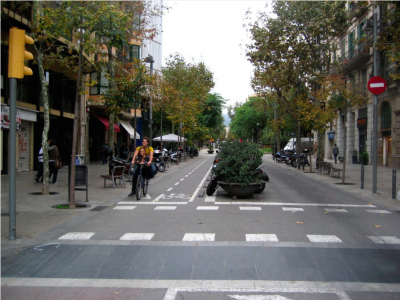
OK, what do we know?
- To get to and from central Wellington, the East is relatively dependent on private cars right now which needs sorting. People there deserve better options just like anyone else.
- But don’t be fooled into thinking that “LRT is the only way to get people out of cars and have nice things in the East”
- BRT or serious bus priority a la Auckland could help transform quality of life in the eastern suburbs *IF* it’s proper BRT, with no BRT creep, and if the local streets in the East are made properly hospitable to people (healthy streets). That means: safe for kids biking and walking to school, for kids and older people walking to the shops and pool and rec centre, substantially traffic-calmed with lower speed limits – the essentials of some low traffic neighbourhoods .
- So: we should all be lobbying the powers that be to give these nice things to the eastern suburbs and those of us who live in them.
3- Whatabout… the Quays vs Golden Mile?
We’ve heard a few arguments that all the cool things should be put together – and concern that the Quays are too far from the cool stuff of the Golden Mile.
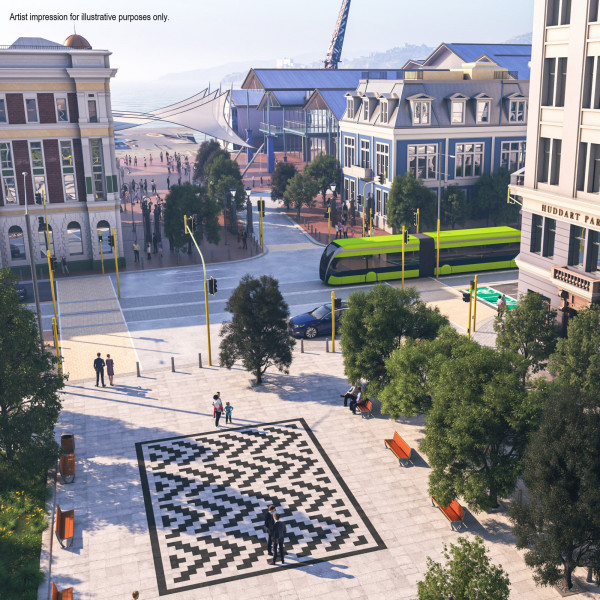
Here’s a helpful thing to remember:
“…in cities where public transport seems to be used for a wide variety of trips every little piece of the system seems dedicated to making your trip time as short as possible. Frequencies are high, dedicated infrastructure is provided to separate the service from congestion (whether that be bus lanes or rail infrastructure), routes are straight, traffic lights turn green when the bus/tram approach them and – yes – the services are fast.”
(From the good summary here by GreaterAuckland.)
Through the centre of our city, too, the mass transit needs to be able to deliver people from As to Bs quickly without compromising the quality of the street experience (e.g. by going dangerously fast).
As the Golden Mile is transformed to an excellent place for people, it’ll (rightfully) become a proper slower-speed zone with the absolute fastest for any vehicles being 30kph, lots more stuff in the street, and loads of people wandering across in a much more relaxed way than now. So the “R” in “MRT” – “Rapid” won’t apply down the Golden Mile.

Compared to the Golden Mile the Quays’ road carriageway is much wider. So it’s more of a “movement” corridor vs the Golden Mile’s “place” corridor, and faster speeds for mass transit (50kph) are legit. It’s also a shorter route, not following the wiggles of the old beach along the Golden Mile, meaning it can traverse the centre a bit quicker.
So the Quays are the best when we think about making a good whole network, which is vital for people to be willing to shift our transport behaviours.
And to get there from the Golden Mile, let’s remember it won’t be like it is now. The default for the short cross-streets (Waring Taylor / Johnston et al) is being carfreed between Featherston and the Golden Mile, and will be enhanced between the Quays and Featherson – and those that aren’t will be heavily traffic-calmed and thereby nicer for people. So the short walks to get from the mass transit to the Golden Mile, Terrace etc will become delightful and much safer. Unsurprisingly, about 45% of people say they’d come to the Golden Mile more often [PDF] with these improvements (another 48% say they’d keep coming as they do now).
Summing up liveability
- For liveability, light rail options are better than bus rapid transit options because they give Wellington the best odds we’ll actually get enough of the good-quality developments we need, allowing the greatest number of people to live great lives with the lightest footprint on the climate.
- To the East folks should get the safe streets and better options for city/home travel that they deserve, with strong bus priority and BRT, plus low traffic neighbourhood initiatives.
- The Quays are best as the mass transit of any kind (in all 4 options).
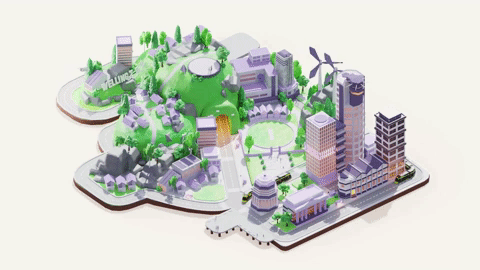
II. Mass transit for sustainability
We know better now: cities can offer everyone high quality of life without eroding our natural capital foundations, and it’s pretty straightforward to build.
So what should we ask when considering LGWM options on sustainability? Three big questions with some little Whatabouts tucked in there.
1. What helps with emissions reduction in our daily lives?
There’s no need to repeat the material above about emissions reduction from our daily transport. You know it. It’s crucial.
The more folks who can live a great life within walking / scooting / biking / sustainable mass transit to all the things we like to do, the greater the emissions reduction. (And regardless of whether being low-carbon floats your boat, low-carbon living makes for the greatest quality of life for everyone!)
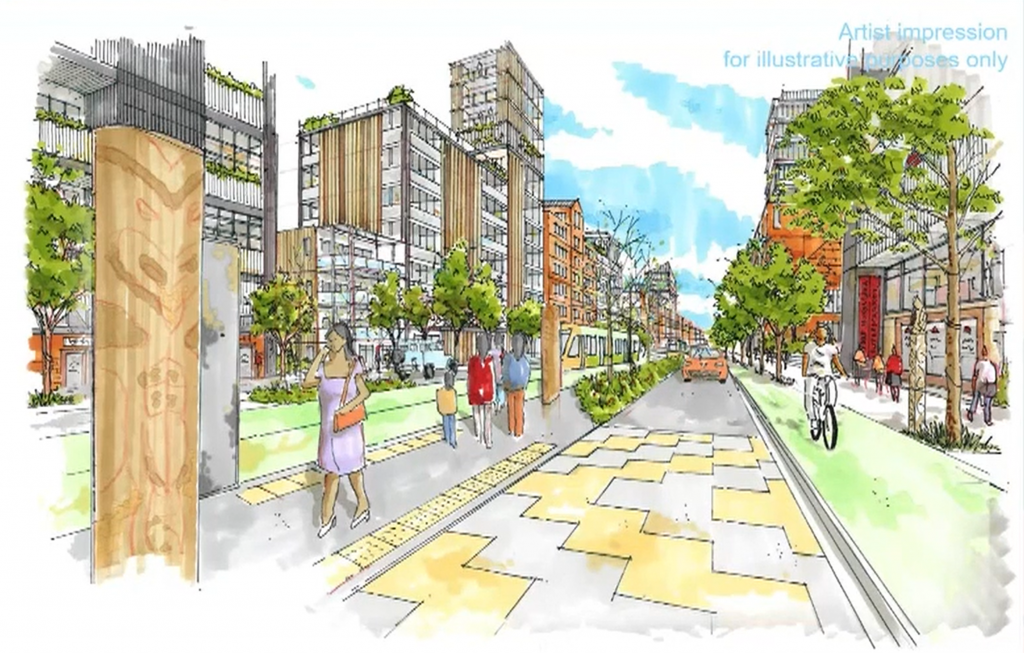
Whatabout… the airport though?
Wellington Airport is very different from Auckland: we’ve no massive manufacturing, employment, and distribution centre on the far side like their Wiri.
Airport congestion looms large in our minds, but in the context of Wellington’s transport system, airport travel is not actually that big a deal.
Even in the Before Times (pre COVID), at most only 15% of Wellington traffic entering the city centre was going even as far as the Mt Vic Tunnel (see caption under fig. 24 here). Pretty much all airport travel is by car right now, because we have zero dignified public transport options – and yet even that traffic is simply not that much.
(It’s hard to believe this because getting stuck in congestion and missing a plane is super stressful, and we remember one stressful experience far more than thousands of non-stressful occurrences. But it’s true).
We can feel confident that for airport trips, the combination of Travel Demand Management, with either kind of mass transit through the central city, and strong bus priority through Mt Vic to Miramar and the Airport will sort out the stress and make them smoother – whichever way you choose to get to the plane.
So in Wellington, “what about airport congestion” is not really relevant for picking mass transit options.
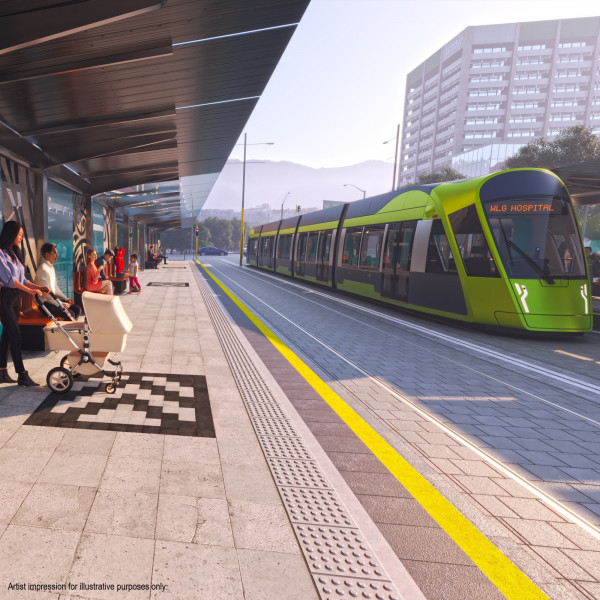
2. What’s the best “no regrets” for all those embodied emissions?
Civil engineering – tunnelling and building up – is pretty carbon heavy. The LGWM emissions report goes into the hows and wherefores of that, and there’s no avoiding it: “civils = emissions”.
So we should make sure we are burning that carbon in making the right things.
- All options include building a new Mt Vic Tunnel, either for public transport or for walking and cycling. This seems logical especially as it’s not including new capacity for private car travel. Good work LGWM, that’s good-practice transport design.
- But another bit of building up and tunnelling is the extension of the Arras Tunnel and building up around it. This is that grade-separation (putting different things at different heights) for north-south and east-west general traffic at the Basin. It’s all predicated on there being quite a lot of said general traffic into the future, so grade-separation is needed to ensure that traffic doesn’t hold itself up, and hold up mass transit too.
- The 3 options that include grade-separation are at least $1 billion more expensive, and have higher overall emissions, than option 4 which doesn’t have grade-separation. This made us look more closely at this aspect, and ask a few confidential questions of folks involved with LGWM (who we couldn’t quote).
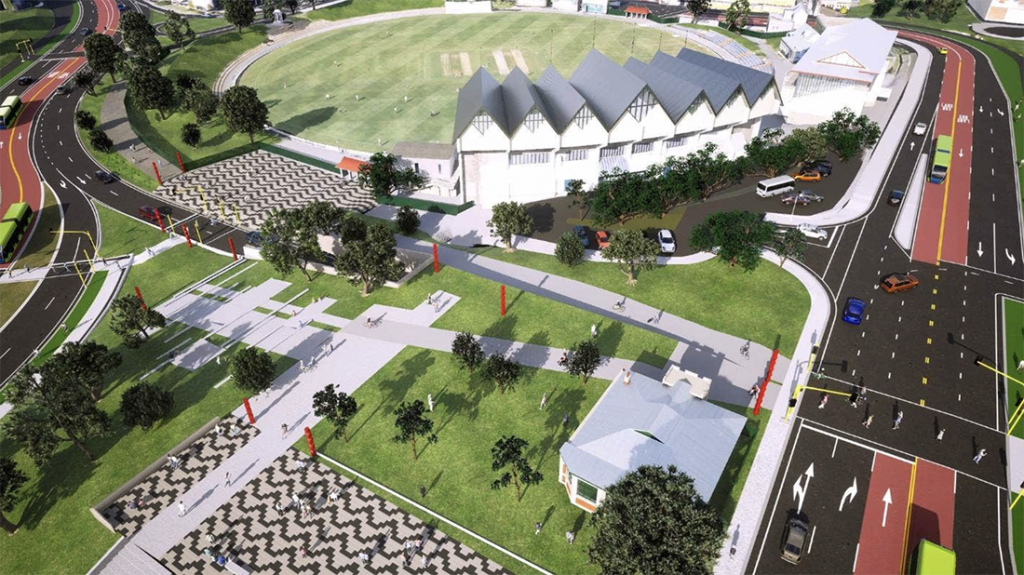
We learned that in future it’s highly likely there’ll be much less car traffic passing through the Basin area than the current options imply.
LGWM sources tell us that the current modelling is conservative in these respects. More information will be coming in early 2022, but what’s particularly useful to note is that this consultation is on the MRT-related capital works (physical stuff) only, and it doesn’t include a huge element of LGWM and of regional transport policy: the Travel Demand Management (TDM). The local projections, based on worldwide experience, predict that it’ll be a major source of emissions reduction. This happens because it induces enough people to change how they get around – see p9 here – taking the edge off private car travel, the main culprit of our transport emissions right now both in Wellington and NZ wide (see the intro here).
So it is safe to assume that once the full set of LGWM and regional initiatives is being done – both capital works AND TDM – there’ll be lots fewer people choosing other ways than private car driving to get around the city.
So with much less traffic on the roads, there’s much lower risk of it holding itself up and holding up other things like mass transit. So it’s genuinely dubious whether grade-separation at the Basin will be needed at all. And because building for stuff tends to get you more of that stuff let’s not risk inducing demand for driving (or dissuading people from choosing other ways) by building more stuff that’s principally predicated on there being lots of driving.

One upside of this grade-separation is that it makes lots of new public realm – which LGWM have put front and centre in the engagement’s visualisations. And the city badly needs lots of new public realm that’s “Ugg boots and cuppa tea” accessible for people living nearby. Given the pick-and-mixing that will go on over the next few months, we should call hard for more public realm too.
Summing up for emissions:
Light rail lets the greatest number of people live close to stuff they want to do (as per above).
And it’s not a good investment to put tons of carbon and money into building grade-separation at the Basin.
3. What’s best for ecological sustainability – biodiversity, healthy waterways?
This is a big deal for a city with too little tree cover and natural space in its centre for even its current population, a persistent nuisance flooding problem, and urban streams so polluted by road runoff they can’t be daylighted.
What will help deal with all the rain and runoff?
- All Wellington’s climate change projections say we’ll get more intense rain: less in summer, more in winter, and coming in bigger, more intense downpours when it does.
- Nuisance flooding is already a thing in Wellington so we need less waterproof surface in the inner city. The best mass transit options will enable more absorbent trafficked lanes: green track!
- Road runoff is super toxic so the more we can capture the nasties before they soak into our groundwater and flow into our streams, the better. Green tracking helps with this too.
- Track gives you options to deal with rain and runoff, whereas tyred mass transit (BRT) needs an impermeable (waterproof) surface.

What will enable more environmentally friendly (expensiverer) developments?
We need all our buildings to be really high performing: as close as possible to Passive (which is good for our power bills, health and happiness). And high performing developments also have great green space including green walls and roofs, they support re-wilding, and they are water-sensitive.
All this costs more, especially as NZ is coming late to these parties and as our building sector gets used to doing good stuff.
Developers can finance more expensive builds if they can be guaranteed higher capacity of people in them, and people coming by. So higher capacity mass transit, that’s guaranteed to stay in one place, means much more scope for having environmentally high-performing developments (which are also better to live in).
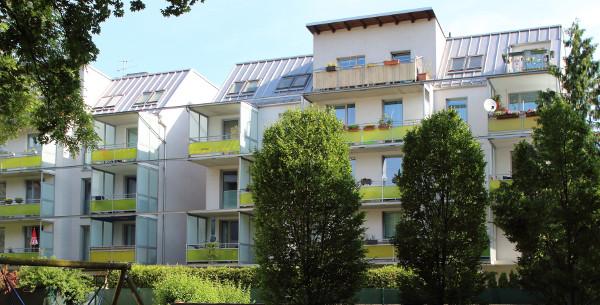
Summing up for Sustainability
For both dimensions of environmental sustainability, tracked (light rail) options are better.
And for the climate, option 4 is the clear best.

Now, some more Whatabouts we’ve heard!
What about cost and time to repair after an earthquake?
Yes, light rail takes longer than BRT to stand up again after an earthquake. Earthquakes are going to be a huge deal for us in Wellington (as will sea level rise) and our urban fabric is generally very underprepared (we the residents are worse).
But for all the rest of the time when we’re not having an earthquake: additional thousands of people that light rail enables to have a great 15-minute neighbourhood life in Wellington is a very good thing.
And even when we have a quake, the more walkable and human-scaled our neighbourhoods, the less we’ll be disrupted by disasters and the quicker we’ll bounce back. This is a big part of the reason why plenty of frequently earthquake’d cities (San Francisco, Tokyo et al) have great light rail networks as well as BRT and buses.

What about cost and time to build and maintain?
Three loosely related points here:
- One of the arguments about extending mass transit to the East is to encourage development out there (in defiance of the layer-cake of hazards). But as a general rule Wellington shouldn’t be trying to spread development across large areas of low-intensity development, because infrastructure with fewer people living on it is much costlier to build and to maintain. (See the Appendix here.) We should focus on intensifying the suburban and major urban centres – what we said we wanted, and what the LGWM Urban Development Report lays out.
2. We will be able to afford this without skyrocketing rates in the next few years. LGWM is 60% nationally-funded anyway, and as water infrastructure debt comes off councils’ books (the one thing everyone can agree on about water reforms!), they will get much more headroom below the local government debt ceiling. So they can borrow cheaply, as government institutional investors are able to do, and spread our payback period over a longer time.
3. An additional advantage of not building unnecessary grade-separation at the Basin is that it frees up around $1 billion over the other options, which we can use for better things. And the engagement materials show it as one of the quicker projects to build (8-12 years instead of up to 15).
TL;DR!
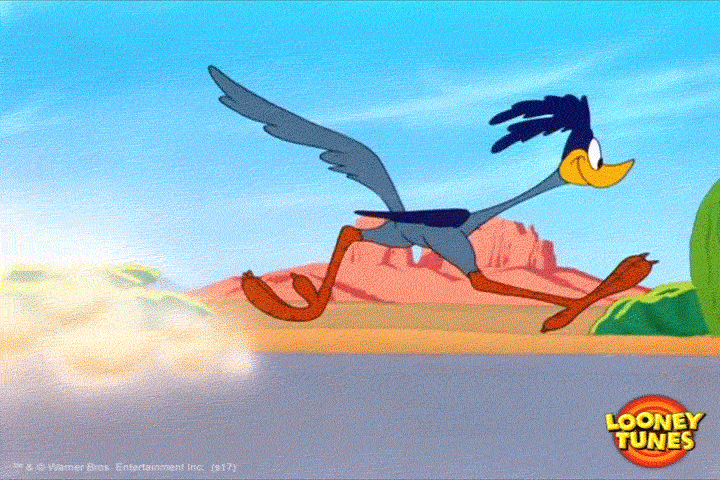
Step by step – and you’ll go really fast!
- go here
- click through the option previews to get to the “Have your say” button.
- The ranking question, oddly, sometimes appears as optional, sometimes not). If you’re TL;DR we’d suggest skipping. Otherwise, we’d suggest putting in your top 3 “reducing carbon emissions” and “more housing closer to where you work and play” and “making it easy to get around without a car” . The rest are up to you – don’t sweat this too much.
“What do you like about these options?”
We suggest for all the reasons above:
Pick Option 4
In the box, we suggest saying words of your own that indicate that it’s your pick because …
It appears to be the one that’s taking an approach of no regrets, the right direction of travel – so light rail
Developers need the certainty to invest and build the really good quality developments we need (holistically sustainable, decarbonising, decolonising), so light rail
it’s important to invest our money, and the carbon emissions of construction, in things that we want more of (active transport, great public transport, green and high-performing corridors), and not in things we want less of (providing for having an ongoing Large Amount Of Traffic on the roads). So no grade separation at the Basin, so option 4.
we’ve waited for ages, and options 1-3 will make good stuff wait around for that unnecessary civil engineering – so option 4.
“What don’t you like about these options? ”
In the box, we suggest saying something like…
More accessible inner city public realm and green space is vital, and option 4 doesn’t offer as much.
“Is there something missing?“
These are some extra things you can add in which will be taken into account and help nudge both LGWM’s next steps, and WCC and GWRC’s other work – like on the District Plan, road maintenance and operations, development policy, the Green Network Plan, and being better Treaty partners as arms of government. Note: Hyperlinks are for your info, the LGWM team won’t need the links live.
- Let the East decarbonise their travel and give them nice things: safer and greener roads and streets, 15-minute neighbourhoods. This is a good use of some of the funds saved by not building humps and extending tunnels by the Basin.
- Great green public realm, that’s super accessible, is vital in the central city. LGWM must do its part to make lots more of this.
- Enable and encourage comprehensive developments especially by sustainable, longterm developers (like Simplicity/NZLiving and iwi Māori), so we get high quality builds, faster, where people want to be.
- Green tracking and rewilding are a priority please.
- Decolonisation – especially enabling re-establishment of nature in the city and telling the stories of place – is a priority, please and thankyou.
- Universal accessibility is a must-have for our city. The detailed design of the mass transit must be best-of-breed in this respect, and all the surrounding streets likewise – including not mixing people walking/wheeling with faster moving things. Do whatever it takes to make the city universally accessible.
- Regionally, give us stronger goals and more urgency on regional mode shift, especially decarbonising travel into Wellington city from the north. Go hard on the regional TDM and more investment in rail access and 15-minute neighbourhoods.
“Which kind of mass transit do you prefer?”
Once more for those in the back:
Light rail.
The rest of the boxes are optional and if you’re TL;DR you can skip them. Just hit SUBMIT FEEDBACK and give yourself a pat on the back.
BRAVO!
Now go get others to have a say too!
Image credits:
- Thumbs up – Aardman Animation
- Complete street – Michel Kodransky
- Green track – via GreaterAuckland
- Whatabout Man – iStock
- Roadrunner – Warner Brothers
This is fantastic – I really appreciate the evidence base, and clarity of arguments. However, you haven’t mentioned the value of linking light rail with railway systems to the north of the city, which would have the advantage of seamless travel from places like Hutt Valley to the centre of town. And, related, it seems pointless to me that we push light rail to the ‘side’ of town. If we are going to have more and worse weather events in the future, who wants “a nice walk” to the train station. It makes much better sense to have light rail as close as possible to where people live and work. I would have thought that “rapid” is far less important to people than “convenience” and, anyway, a good system will reduce congestion levels, so rapid shouldn’t be so much of a worry, in future. Also, if you think about it, if you have to spend five minutes walking to the train, why is the speed of the train such an issue?? I will be arguing for Option #4, but with requests to ensure linkages at the Railway Station; and through the Golden Mile. It would be great if you could think about this, and provide similar advice to people.